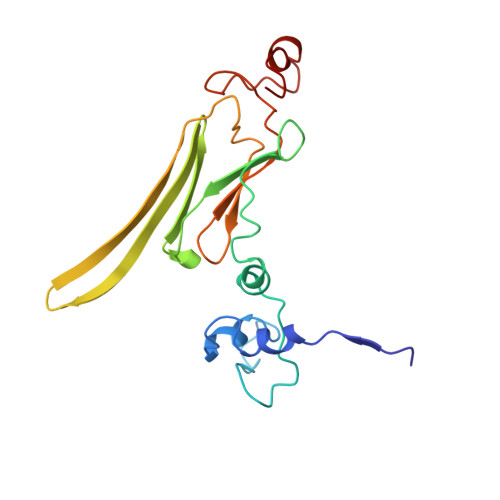Multiple Molecular Architectures of the Eye Lens Chaperone Alpha Beta-Crystallin Elucidated by a Triple Hybrid Approach
Braun, N., Zacharias, M., Peschek, J., Kastenmueller, A., Zou, J., Hanzlik, M., Haslbeck, M., Rappsilber, J., Buchner, J., Weinkauf, S.(2011) Proc Natl Acad Sci U S A 108: 20491
- PubMed: 22143763
- DOI: https://doi.org/10.1073/pnas.1111014108
- Primary Citation of Related Structures:
2YGD - PubMed Abstract:
The molecular chaperone αB-crystallin, the major player in maintaining the transparency of the eye lens, prevents stress-damaged and aging lens proteins from aggregation. In nonlenticular cells, it is involved in various neurological diseases, diabetes, and cancer. Given its structural plasticity and dynamics, structure analysis of αB-crystallin presented hitherto a formidable challenge. Here we present a pseudoatomic model of a 24-meric αB-crystallin assembly obtained by a triple hybrid approach combining data from cryoelectron microscopy, NMR spectroscopy, and structural modeling. The model, confirmed by cross-linking and mass spectrometry, shows that the subunits interact within the oligomer in different, defined conformations. We further present the molecular architectures of additional well-defined αB-crystallin assemblies with larger or smaller numbers of subunits, provide the mechanism how "heterogeneity" is achieved by a small set of defined structural variations, and analyze the factors modulating the oligomer equilibrium of αB-crystallin and thus its chaperone activity.
- Center for Integrated Protein Science Munich, Chemistry Department, Technische Universität München, Lichtenbergstrasse 4, 85747 Garching, Germany.
Organizational Affiliation:
















